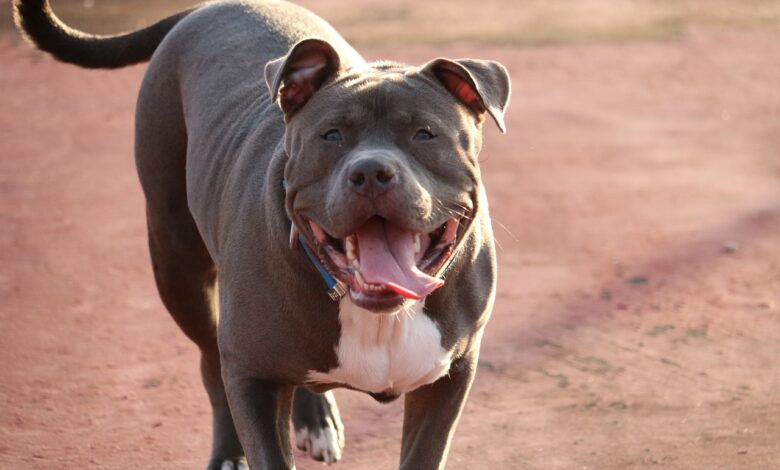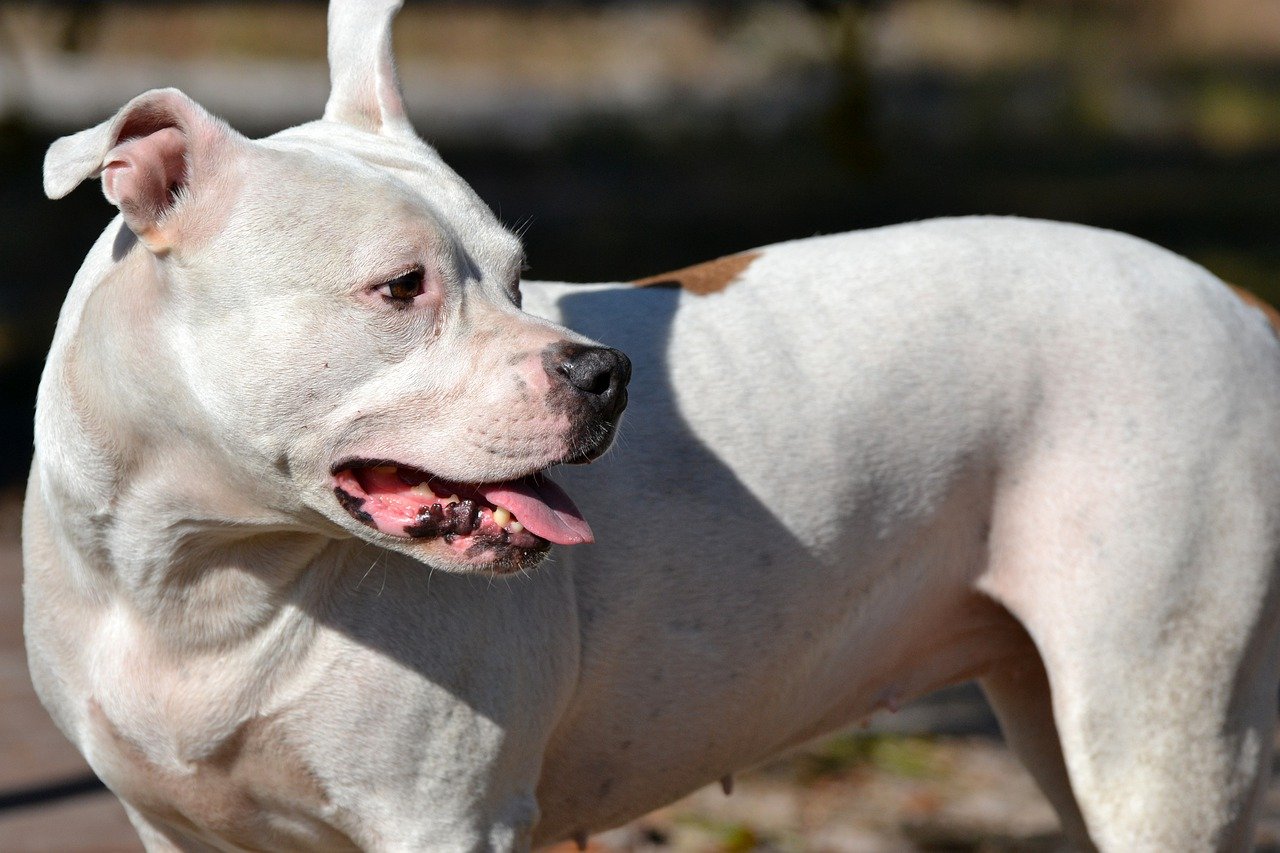What Were Pit Bulls Originally Bred For?

Pit Bulls, a term often used to describe a collection of breeds including the American Pit Bull Terrier, American Staffordshire Terrier, Staffordshire Bull Terrier, and sometimes the Bull Terrier, are among the most misunderstood and misrepresented dogs today. To truly understand these loyal and loving canines, it’s essential to delve into their history and determine the original purpose of their breeding.
1. The Ancestral Roots of the Pit Bull
The story of the Pit Bull begins across the Atlantic, in England. Here, the ancestors of today’s Pit Bulls were primarily bred for bull-baiting, a popular sport from the 12th to the 19th century. In bull-baiting, dogs were set upon a tethered bull. The goal was for the dog to immobilize the bull by biting its nose or head. This cruel spectacle was not just for entertainment; it was believed that baiting the bull before slaughter tenderized its meat. The dogs used in these events were the early ancestors of the Pit Bull, valiantly facing off against a much larger opponent.
2. Evolution to Dog Fighting and the Birth of the Pit Bull Name
With the eventual banning of bull-baiting in the 1800s due to its inhumane nature, people turned to another illicit sport: dog fighting. The same breeds previously used in bull-baiting were crossbred with smaller, quicker breeds to produce a dog that was both agile and strong. This new breed became the early version of the Pit Bull we recognize today.
The term “Pit Bull” derives from these fighting pits. “Pit” refers to the arena where these dogs were forced to fight, and “Bull” nods to their ancestral role in bull-baiting. Even as the purpose behind their breeding shifted, the courage and tenacity intrinsic to the Pit Bull remained a constant.
3. Pit Bulls as Working Dogs and Companions
Although it’s easy to associate the Pit Bull’s past with violence, it’s crucial to remember that, throughout history, the majority of these dogs were not involved in fighting or baiting. Instead, they were invaluable as farm dogs and loyal companions. In rural areas, Pit Bulls served as herders, hunters, and guardians. Their strength and intelligence made them ideal working dogs.
Moreover, Pit Bulls were often seen as family dogs. Their gentle disposition, especially towards children, earned them the nickname “nanny dogs.” Historical photos from the late 19th and early 20th centuries frequently showcase Pit Bulls sitting proudly with family members, a testament to their enduring bond with humans.
4. Pit Bulls as Symbols of Resilience and National Pride
The versatility of the Pit Bull was not just limited to farms and homes. During World War I, the United States employed the image of a stoic and courageous Pit Bull as a symbol of national pride. A famous poster from that era showcases a Pit Bull wearing an American flag, representing the country’s unyielding spirit. Beyond symbolism, Pit Bulls also served as messenger dogs, helping troops communicate on the battlefield.
5. The Modern Perception of the Pit Bull
It’s tragic that despite their rich and varied history, modern Pit Bulls often face negative stereotypes. These misconceptions stem largely from media sensationalism and the unethical actions of those who misuse the breed for criminal activities. The original intent behind the breeding of Pit Bulls was not aggression towards humans but rather courage, resilience, and a strong work ethic.
Conclusion: Embracing the True Nature of the Pit Bull
Understanding the origins of the Pit Bull is key to dismantling the myths surrounding them. Originally bred for bull-baiting and later unfortunately used in dog fights, the true essence of the Pit Bull lies in their roles as workers, protectors, and loyal companions. As society continues to learn and grow, it’s our hope that the inherent kindness and devotion of the Pit Bull will once again shine through, just as it did in centuries past.
Frequently Asked Questions About Pit Bull Breeding

1. What characteristics distinguish the American Pit Bull Terrier from other breeds?
The American Pit Bull Terrier is known for its strength, intelligence, and loyalty. They possess a medium-sized, solidly built physique and are recognized for their gentle temperament, especially with children. However, due to their appearance and historical associations, they’re often mistaken for other breeds or wrongly stigmatized.
2. How often should Pit Bulls be bred to maintain their health?
A female Pit Bull should ideally be bred once a year or less to ensure her health and the well-being of her puppies. Overbreeding can cause undue stress on the mother and increase health risks for the puppies.
3. At what age is it safe to begin breeding a Pit Bull?
Pit Bulls should be bred only after reaching full maturity, which is typically around 2 years of age. Breeding them before they’re physically and mentally mature can jeopardize the health of both the mother and her offspring.
4. How long is the gestation period for a pregnant Pit Bull?
Pit Bulls, like most dog breeds, have a gestation period of approximately 63 days. It can vary slightly, so it’s essential to monitor the mother’s health and consult a veterinarian throughout her pregnancy.
5. How many puppies can a Pit Bull typically have in one litter?
A Pit Bull litter usually comprises 5 to 10 puppies. The exact number can depend on factors such as the mother’s age, health, and her specific genetic background.
6. Which health screenings are crucial before breeding Pit Bulls?
It’s imperative to screen Pit Bulls for potential hereditary health issues before breeding. This includes checking for hip dysplasia, cardiac issues, and conducting DNA tests for specific hereditary conditions that may affect the breed.
7. Are there any prevalent genetic disorders in Pit Bulls to be aware of when breeding?
Yes, some genetic disorders, such as hip dysplasia, congenital heart defects, and hereditary cataracts, can be more prevalent in Pit Bulls. Knowledgeable breeding can help minimize the occurrence of these health issues.
8. What risks are associated with inbreeding Pit Bulls?
Inbreeding, or mating closely related Pit Bulls, can elevate the risk of genetic disorders and other health issues. It’s essential to maintain genetic diversity in breeding practices to support the overall health of the breed.
9. What are the signs of a responsible Pit Bull breeder?
A reputable Pit Bull breeder prioritizes the health and temperament of the dogs, conducts thorough health screenings, provides proper socialization for puppies, and possesses in-depth knowledge about the breed’s characteristics and needs.
10. Why should one consider adopting a Pit Bull from a rescue or shelter?
Adopting a Pit Bull from a rescue or shelter offers the dual benefits of providing a loving home to a dog in need and combatting the overpopulation problem. Many Pit Bulls in shelters are there due to misconceptions about the breed or circumstances beyond their control, not because of behavioral issues. Adopting from a shelter can also be cost-effective and supports the vital work these organizations do to rescue and rehabilitate dogs.




